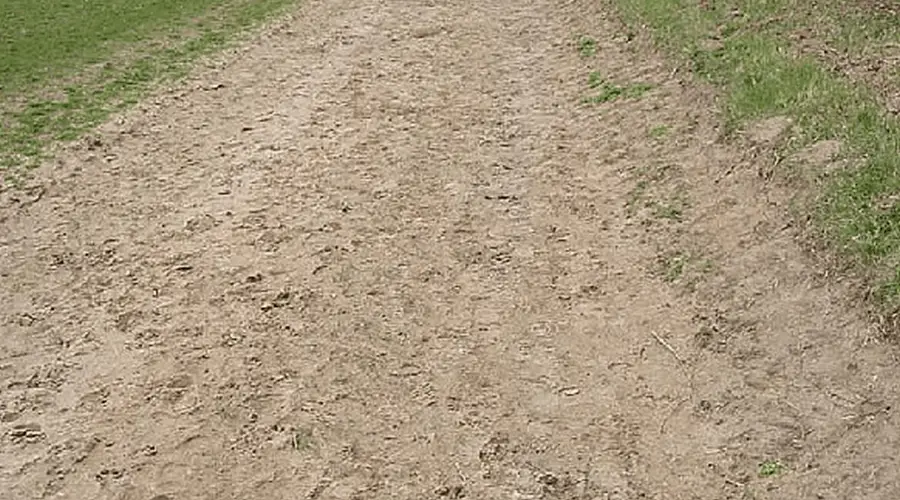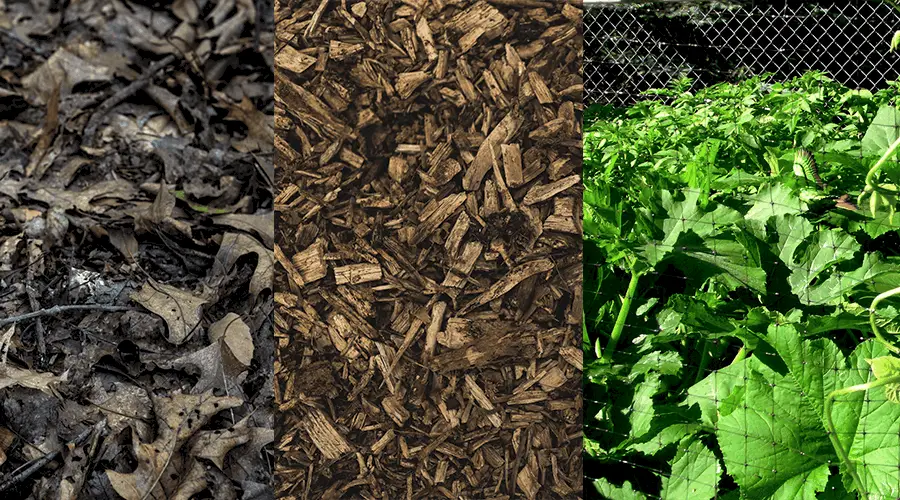Ever wondered if growing a luscious green garden on your Florida sandy soil was possible? I found out a few things about our soil in Florida by doing some research and having personal experience.
Can I grow a garden in my sandy Florida soil?
Yes you can, but it’s always beneficial to add compost and a thick layer of mulch. Sandy soil has a hard time holding onto any moisture so adding organic material will increase moisture retention and make a more happy and healthy garden.
What is Florida soil made up of?

In Florida the majority of our soil is called Myakka. If you live in central Florida, and even some parts of north and south Florida, this is probably what you have in your backyard.
Its sandy dirt.
The panhandle parts of Florida have more clay based soils as we start to creep up into georgia.
Southern Florida (Miami area) has some marshy soils but also some soils that are rich with organic matter that may need less amending than other parts of the state.
When you get down into where the keys you’re talking real sand, like beachy sand.
For the most part though we can say that our soils are sandy.
The problem with sandy soils is that they drain quickly and don’t hold onto nutrients for very long.
How do I make Florida soil better?

- Compost
- Mulch
- Cover crops
The easiest way to improve your soil is by working in plenty of compost each time before planting and laying a thick layer of mulch.
This will benefit almost any soil type. These two simple things will help sandy soil hold onto water better and clay soils drain better.
Soil that is made mostly of sand is super loose and water just runs through it. Pieces of sand are large in comparison to little pieces of clay. Clay soil is so compact that water can’t run through it fast enough.
Adding organic material like compost to sandy soil gives the water something to hold onto.
In clay like soils organic material break apart the tightly compacted soil creating Pathways for water to get through.
Mulching is Especially important in Florida sandy soil. Laying a thick layer of mulch over your soil keeps the sun’s rays off of the exposed dirt. This helps your soil hold onto water longer so it’s not evaporating in the sunlight. mulch also collects morning dew which is another benefit to your soil.
You don’t always have to buy mulch from stores either. Anything can really be mulch.
You can use leaves, you can use cut branches, you can use ripped up cardboard.
You can get really creative with mulch the whole point of mulch is to just to be an added layer on top of your dirt , something that blocks the sun’s rays but retains moisture. A good 3 to 4 inch layer will do your soil right.
Cover crops Are basically plants you plant with intentions of killing and mixing into the soil. the two most popular ones for Florida Growers are sun hemp and Southern Peas.
They both fix nitrogen to the soil and if cut down at the proper time(before they go to seed) produce lots of soft leafy greens that will easily decompose in the soil.
What is the pH of Florida soil?
Florida’s soil is normally Slightly acidic with the average soil pH in the state being 6.1. This is of course going to vary from place to place and you should definitely check your soil’s pH. It’s not a bad idea to have your local extension office check out your soil. You can find your local office here, and the one near my house sent my soil to UF to be analyzed for like 3 bucks. I got my pH and nutrient levels tested.
Florida’s average pH isn’t far off from where vegetables like to be(pH of 6.5).
You may or may not have to alter your soil’s pH depending on what your test results say. If my soil was a pH of 6.1 I would give vegetable gardening a go and see what happens. That’s pretty close to what veggies like and altering soil pH is a never ending game.
You can add calcium carbonate or Dolomite to raise the acidity of your soil or you can add sulfur to lower the acidity of your soil. the effects of all of these things are short-lived, you will constantly be battling your soil’s pH.
What can I grow in Florida soil?
If you properly amend your soil you’ll have a decent shot at growing veggies or whatever you want that first year.
But honestly if you continue to build your soil year after year you can grow anything in it.
At first though, when your soil is still pretty Sandy and has a low percentage of organic matter try planting some root vegetables.
Sandy soils are loose. This benefits root growing vegetables like potatoes,carrots, and radishes. With loose soil surrounding them there’s not much pressure restricting their growth.
Potatoes:
- Florida friendly varieties: French Fingerlings, Kennebec, Sebago, Yukon Gold, Red laSoda, LaRouge, Russet Norkotah
- When to plant: North and central Florida should plant between January and March. Southern Florida should plant between October and January.
Carrots:
- Florida friendly varieties: Chatenay, Imperator 58, Little Finger, Nantes, Tendersweet
- When to plant: North Florida should plant between September and March. Central Florida has a planting window of October to March and southern Florida is between October and February.
Radishes
- Florida friendly varieties: Cherry Belle, White Icicle, Sparkler, Champion, Daikon
- When to plant: Northern Central Florida should plant between September and March. Southern Florida should wait just a tad and plant between October and March.
These are not the only vegetables that you can grow here in Florida. These are just vegetables that use our natural soil structure to their advantage.
Southern peas(also called cowpeas and black-eyed peas) were mentioned earlier in the cover crops section of this article because these will actually grow decently in poor soil. They give nitrogen back to the soil and can be mixed back into the dirt to add lots of biomass and increase soil health if you cut them down young.
If you want, you can actually grow these for harvest not just a cover crop. Southern peas make the black-eyed peas that you see in the store.
Southern Peas
- Florida friendly varieties: Brown crowder, California Blackeye, Pinkeye Purple Hull, Texas Cream
- When to plant: Southern peas can be planted from March through August in both North and Central Florida. Arizona south should get their seed into the ground between September and April.
If you think outside of the standard veggie box there are some Florida native plants we can grow that actually produce food and enjoy our soil. these plants can thrive with very little soil amendments.
Seas grapes:
Is native to the sub tropical regions of Florida. It has large volleyball sized leaves and makes clusters of grapes. It grows really well in central and southern Florida but northern freezes will kill it.
The fruits taste a bit like grapes but they have a large seed in the middle which makes eating them less enjoyable than regular grapes.
These things can grow in many different ways and can be trained how you would like them to grow whether it be a tree, a bush or a vine.
Don’t be afraid of trimming them, they can take it.
Mature plants do drop a large number of leaves, which make a great mulch but can also be a hassle at times.
Purslane
Is seen as a weed by some and others as a prized food. The US Department of Agriculture classifies purslane as a noxious weed. I think this is because it grows so well in almost any climate or soil condition. Purslane just seems to find a way to survive.
Purslane is a succulent and if you’ve gardened before I bet that you’ve seen it popping up in your garden. I know I have.
And I’ve pulled it out before too but the plants are actually edible.
New growth that is soft and tender are regularly eaten as greens throughout Europe and Asia.
Jerusalem artichoke
Sometimes called the sun choke is a root vegetable that’s native to parts of Florida. Its a plant that grows tall(6-10 feet) is related to the sunflower and makes nice looking yellow flowers.
The plant produces roots that are edible. It’s not what you think of when you first hear the words artichoke.
They will grow in almost any soil.
Jerusalem Artichokes are more suited to cooler climates but they will still grow in Florida. Southern Florida gardeners will have the hardest time growing these however.
A well known Florida variety is “French Mammoth White” and I would try planting these during spring heading in to the cooler months. Around September and October for central and north Florida and October to November in southern Florida.
Gardening in the Florida dirt
- If you are continuously building your soil by adding compost and mulching you can grow anything you want in your Florida garden.
- It’s always important to lay down mulch.
- Our Florida soils are naturally pretty Sandy with a pH of around 6.1.
- There are some plants that prefer our soil like Jerusalem artichoke, purslane and sea grapes.
- If your soil is still Sandy after adding compost to it try growing root vegetables like carrots potatoes and radishes to take advantage of the loose structure that sandy soil has.
